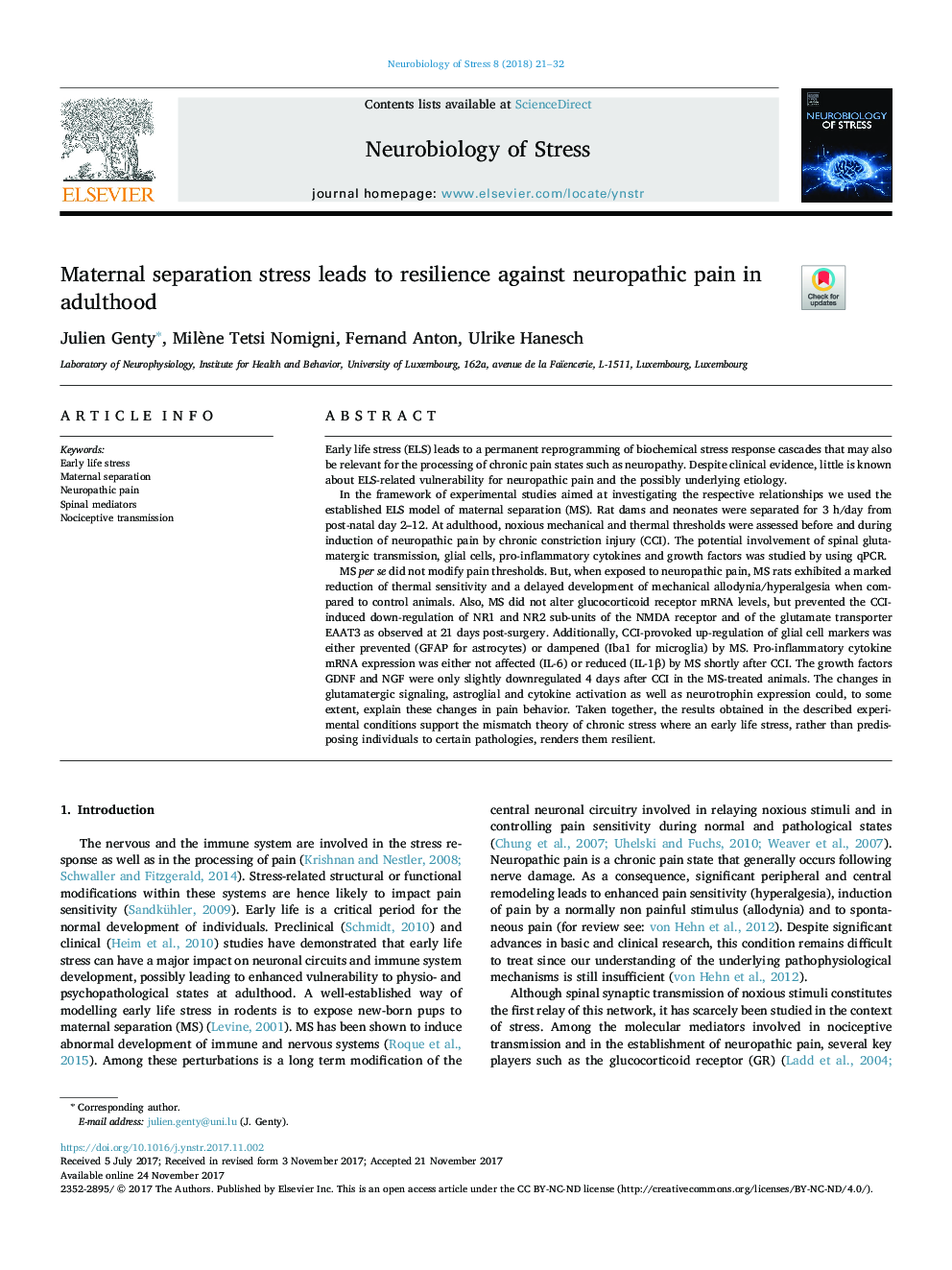| Article ID | Journal | Published Year | Pages | File Type |
|---|---|---|---|---|
| 8838721 | Neurobiology of Stress | 2018 | 12 Pages |
Abstract
MS per se did not modify pain thresholds. But, when exposed to neuropathic pain, MS rats exhibited a marked reduction of thermal sensitivity and a delayed development of mechanical allodynia/hyperalgesia when compared to control animals. Also, MS did not alter glucocorticoid receptor mRNA levels, but prevented the CCI-induced down-regulation of NR1 and NR2 sub-units of the NMDA receptor and of the glutamate transporter EAAT3 as observed at 21 days post-surgery. Additionally, CCI-provoked up-regulation of glial cell markers was either prevented (GFAP for astrocytes) or dampened (Iba1 for microglia) by MS. Pro-inflammatory cytokine mRNA expression was either not affected (IL-6) or reduced (IL-1β) by MS shortly after CCI. The growth factors GDNF and NGF were only slightly downregulated 4 days after CCI in the MS-treated animals. The changes in glutamatergic signaling, astroglial and cytokine activation as well as neurotrophin expression could, to some extent, explain these changes in pain behavior. Taken together, the results obtained in the described experimental conditions support the mismatch theory of chronic stress where an early life stress, rather than predisposing individuals to certain pathologies, renders them resilient.
Related Topics
Life Sciences
Neuroscience
Behavioral Neuroscience
Authors
Julien Genty, Milène Tetsi Nomigni, Fernand Anton, Ulrike Hanesch,
